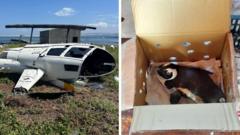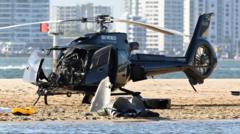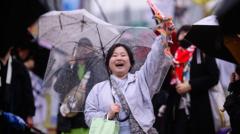Following a multitude of warnings regarding bird strikes, including a meeting just days prior to the incident, the operators of Muan International Airport in South Korea have come under scrutiny after the crash of Jeju Air Flight 2216 resulted in significant loss of life. Lacking sufficient safety protocols, the airport's management allowed potential hazards to persist, particularly in an area known for its soaring bird populations.
**Deadly Jeju Air Crash Exposes Safety Oversights in South Korea's Aviation Industry**

**Deadly Jeju Air Crash Exposes Safety Oversights in South Korea's Aviation Industry**
Officials knew of bird strike risks yet failed to implement adequate preventive measures before a tragic December accident that claimed 179 lives.
Diving into available documentation and witness accounts, reports indicate there was a meeting on December 19, where experts flagged increased bird strikes in the vicinity, prompting concerns for incoming flights. Despite these warnings, the airport reportedly did not take substantial action to minimize the risk, continuing to use inadequate methods to deter birds, such as ineffective loudspeaker systems.
Ten days later, a bird strike occurred during the flight’s approach, leading to a catastrophic emergency landing where the aircraft skidded off the runway, resulting in an intense fire and loss of life. Evidence suggests that feathers and blood from a Baikal teal were found in the engines, highlighting the potentially preventable nature of the accident.
Critics now question if emergency protocols are being followed adequately and what regulatory reforms may be necessary to enhance the safety of operations at airports in South Korea.
In the aftermath of the tragedy, further investigations are ongoing to evaluate the full scope of responsibility and whether regulatory bodies had adequate oversight to prevent such a disaster from occurring in the first place. As the country mourns the loss of lives, a national conversation on aviation safety protocols appears inevitable.
As future discussions unfold, the impact of the current findings may reshape current aviation practices, alongside pressure for increased funding and attention to airport safety infrastructure to prevent future catastrophes.
Ten days later, a bird strike occurred during the flight’s approach, leading to a catastrophic emergency landing where the aircraft skidded off the runway, resulting in an intense fire and loss of life. Evidence suggests that feathers and blood from a Baikal teal were found in the engines, highlighting the potentially preventable nature of the accident.
Critics now question if emergency protocols are being followed adequately and what regulatory reforms may be necessary to enhance the safety of operations at airports in South Korea.
In the aftermath of the tragedy, further investigations are ongoing to evaluate the full scope of responsibility and whether regulatory bodies had adequate oversight to prevent such a disaster from occurring in the first place. As the country mourns the loss of lives, a national conversation on aviation safety protocols appears inevitable.
As future discussions unfold, the impact of the current findings may reshape current aviation practices, alongside pressure for increased funding and attention to airport safety infrastructure to prevent future catastrophes.



















